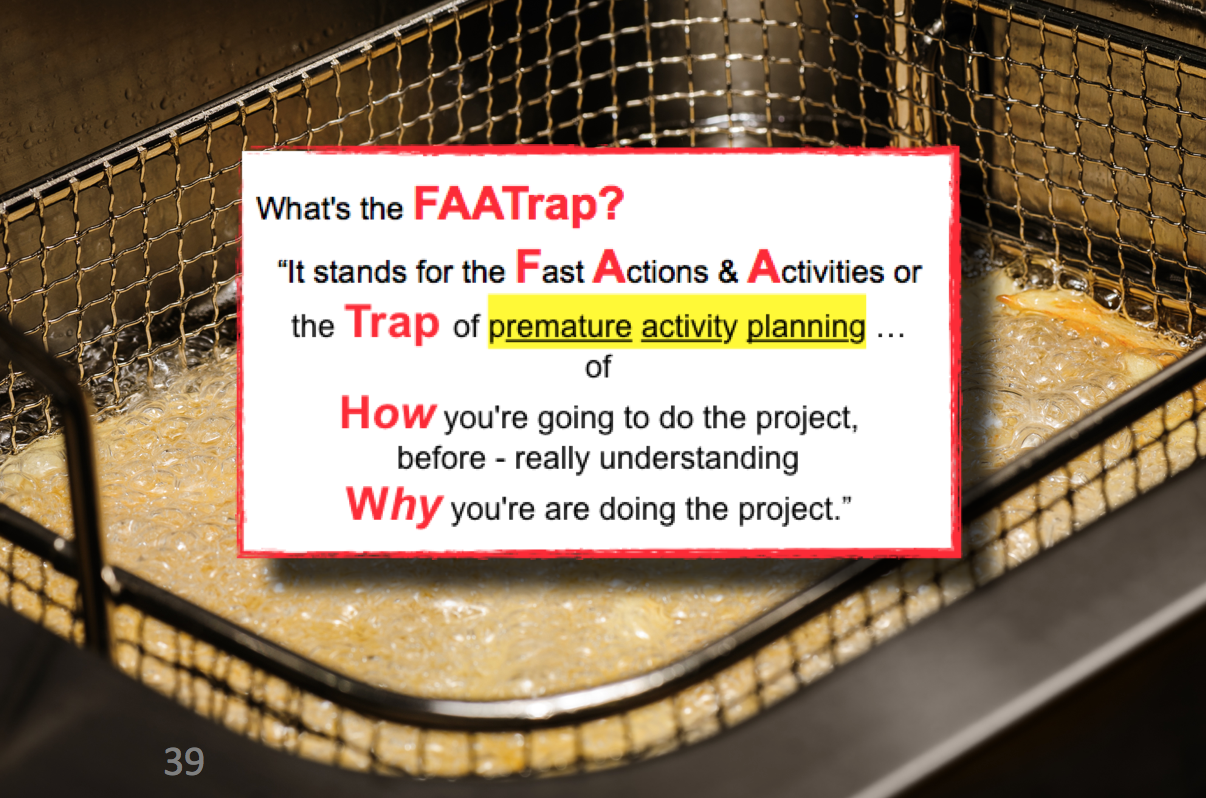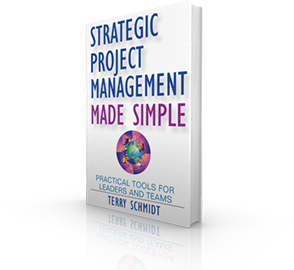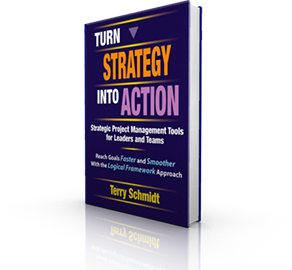After NASA’s $125 million Mars Orbiter crashed during the landing phase, a later analysis showed that the spacecraft builders worked in the metric system. NASA assumed, but for some reason failed to verify, that the builders were using the English measurement system of feet and inches. Thus, the Orbiter’s computer contained bogus data and the mission failed.
And when “Company XYZ’s” strategic plan crashed during execution, a review showed that the core strategic planning team defined the future vision and set vague goals without much stakeholder involvement. They assumed, but failed to obtain, that there would be strong support those affected by their plans. This assumption was bogus and their strategy failed.
Whether you are shooting for Mars or aiming someplace closer, many missions that matter crash on the hard rocks of reality when an implicit but unmanaged assumption went awry.
Murphy and his infamous law dwell in the murky mess of invalid assumptions — those conditions which must exist for the strategy to be valid. The graveyard of failed strategic plans is littered with undefined, unexamined, and untested assumptions such as:
- Top management support is etched in stone on this one.
- Everyone is in the loop and on-board for the entire ride.
- We have a good balanced scorecard and that should be sufficient.
- No use wasting too much ink because we all know plans change.
Assumptions Matter
Invalid assumptions are the soft underbelly of achieving strategic goals. When bad things happen to good strategies, erroneous assumptions are often to blame.
Every strategy and project plan rests on assumptions—whether or not they are acknowledged or verified.
The best strategic thinkers, planners, and change agents take the time to identify, examine, and validate their underlying assumptions. Faulty assumptions act as invisible beds of quicksand, eager to suck good intentions under. How do you surface the most relevant ones?
There are two levels at which assumptions analysis can help planners to reality-base their work. One level concerns assumptions made about the implications of trends and factors that show up during an environmental scan.
There’s an old story about two European shoe salesmen sent to adjacent regions of Africa to study sales potential. The first reported back that since no one wore shoes, there was zero sales potential. The second reported that since no one wore shoes, the potential was infinite. Both salesmen noted the same underlying facts, but reached diametrically opposed conclusions. These contrasting conclusions reveal very different mental models and assumption at play. This phenomenon can also occur during strategic planning and among strategic planner as well, because we seldom bother to make explicit our implicit assumptions.
Ask yourself, “What should we assume?” or “What are we assuming?” in such categories as:
- Planning Team Members
- Related Projects
- Stakeholders Interests
- Willingness to Change
- Management Support
- Customer Expectations
- Technical Issues
- Political Climate
- Resource Availability
- Competing Concerns
Three Steps for Managing Assumptions
Your own experience may confirm just how many strategic initiatives fall flat due to faulty, ill-formed, undefined or unexamined assumptions.
Assumptions always exist, whether or not we acknowledge or verify them. You need to get them out of your head and onto paper.
Try this simple three-step process to surface easily-overlooked potential deal beakers which deserve your attention.
Step 1. Identify Key Assumptions.
Get your core team together, or fly solo, and use these kick-off questions to surface underlying Assumptions:
- What conditions must exist, and what factors must be true, for this effort to work?
- How must the world cooperate with us?
- What else must happen for this to succeed?
- What else should we assume?
Step 2. Analyze and Test Them
Now you can analyze and test each with questions like these:
- How important is this Assumption to strategy success or failure?
- How valid or probable is this Assumption? What are the odds? How do we know?
- If the Assumptions fails, what is the impact? Does it diminish level of accomplishment? Delay it? Destroy it?
- What could cause this Assumption to not be valid?” (Note: This one triggers specific risk factors).
Use this first-cut analysis as a jumping-off point for more rigorous risk assessments using conventional risk management techniques.
Step 3. Act On Them
Now subject each assumptions to the following:
- Is this a reasonable risk to take?
- To what extent is it amenable to control? Can we manage it? Influence and nudge it? Or only monitor it?
- How can we design our initiatives to minimize the impact of, or work around, risky Assumptions?
- What contingency plans might have handy just in case?
Managing Assumptions requires making contingency plans and putting preventive solutions in place. For example, if it absolutely, positively must get there overnight, send identical packages by DHL, UPS and FedEx. If dark storms are brewing, do the organizational equivalent of nailing on plywood and getting a gasoline-powered pump before the hurricane hits! You get the idea.
Steering Assumptions In Your Direction
Question #3 of the 4 Cornerstone Questions helps surface and test your assumptions, so you can either deal with them before they crush your strategy, or monitor them and have a “Plan B” waiting in the wings
When you and your team become adept at managing assumptions, you’ll be better prepared to sail skillfully and courageously across the sea of change washing over us, rather than getting drowned by a strategic tsunami you didn’t see rolling in on the horizon.
—————-
To learn the 4 Cornerstone Questions that result in bullet-proof project plans, click here to register for my one hour Project Super Power System training at no cost.
—————-
Terry Schmidt is a business strategist, keynoter, author of Strategic Project Management Made Simple, and chief honcho at ManagementPro.com. He helps leaders at all levels to develop the skill set and mindset to accomplish outstanding results.









